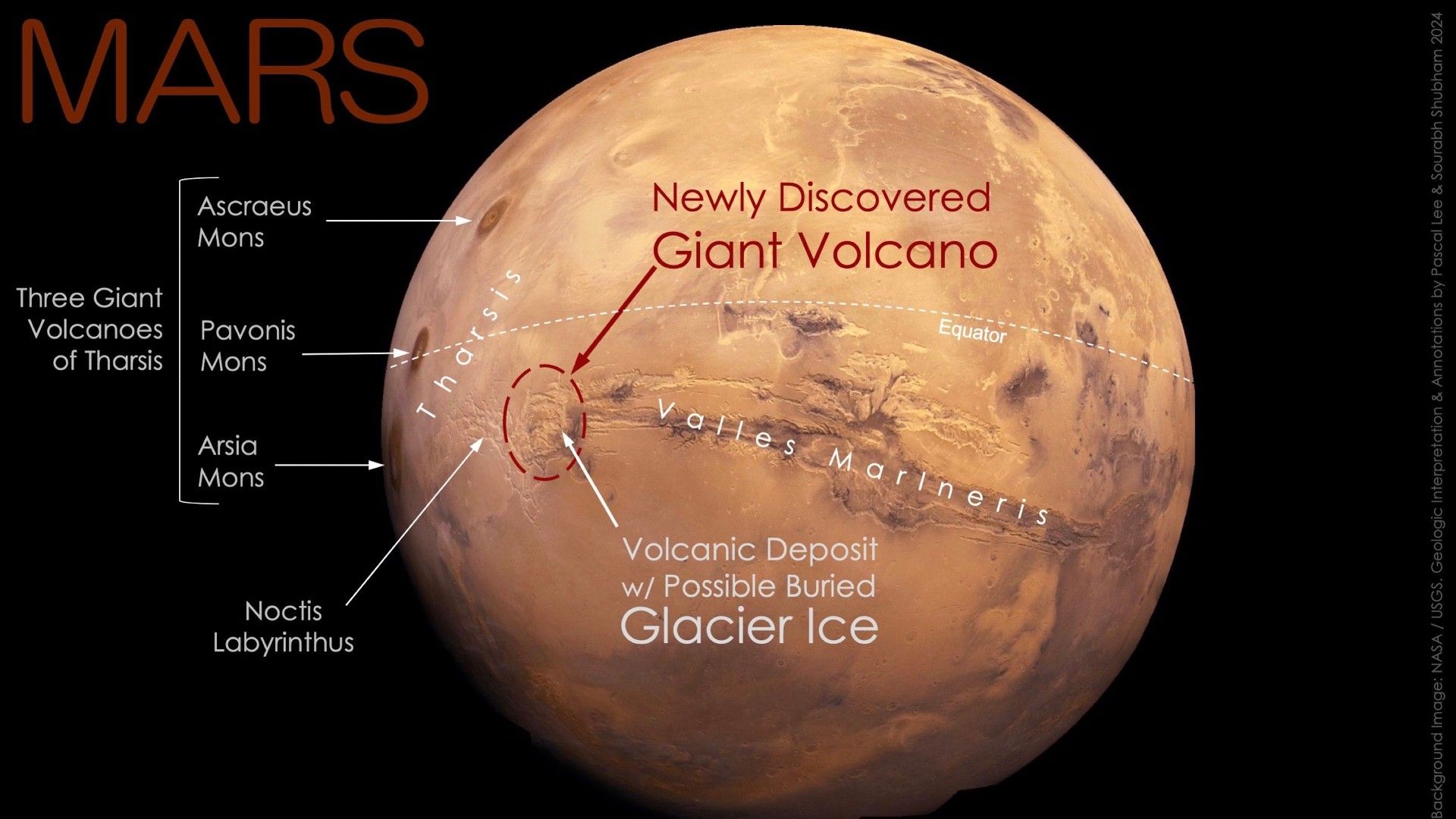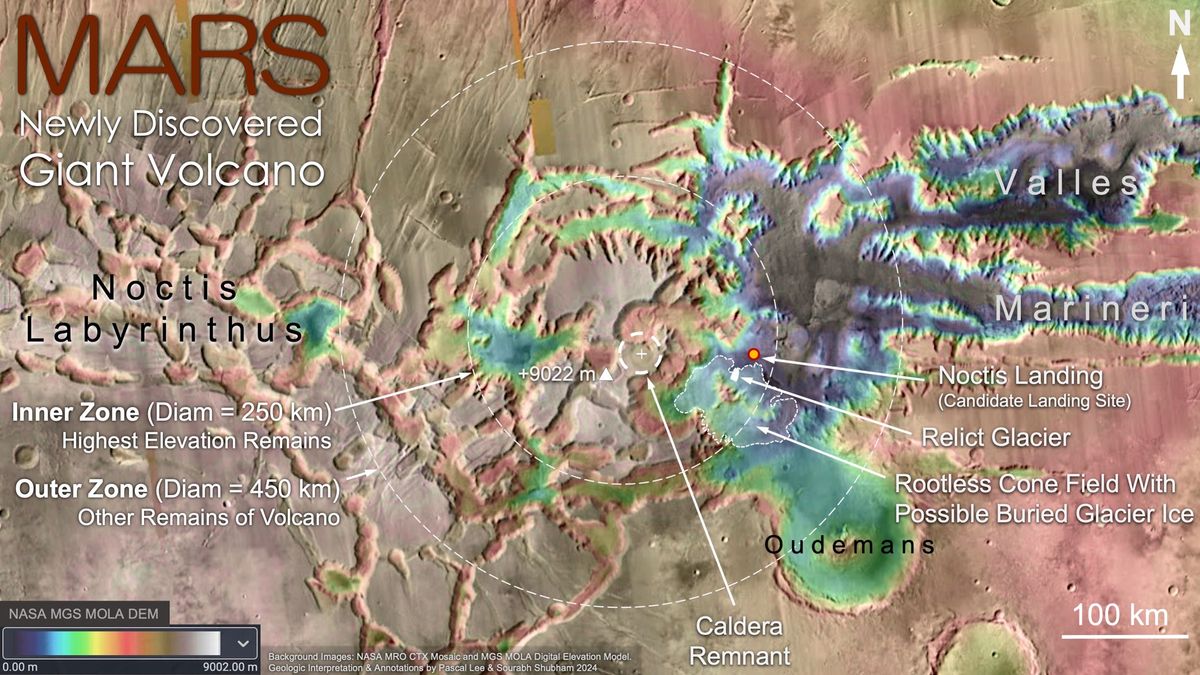A massive hidden volcano discovered on Mars, signs of possible life?
Published by Adrien,
Source: 55th Lunar and Planetary Science Conference
Other Languages: FR, DE, ES, PT
Source: 55th Lunar and Planetary Science Conference
Other Languages: FR, DE, ES, PT
Follow us on Google News (click on ☆)
This colossus, located near the Martian equator in the Tharsis volcanic province, stretches almost 280 miles wide and rises more than 29,500 feet (9,000 meters) high. This revelation was made during the 55th Lunar and Planetary Science Conference in Texas, opening a new chapter in the exploration of the Red Planet. What makes this discovery particularly intriguing is the presence at its base of what appears to be the remnants of a buried glacier, promising to make this volcano a key site for astrobiological research and the quest for signs of extraterrestrial life.

The giant volcano recently discovered is located near Mars's equator. It is depicted in the image above in relation to other volcanoes found in the Tharsis region of the planet.
Credit: Background image: NASA/USGS Mars globe. Geological interpretation and annotations by Pascal Lee and Sourabh Shubham 2024
This volcano, yet without an official name, is located on the outskirts of the iconic region of Noctis Labyrinthus, the "labyrinth of the night", and the immense canyons of Valles Marineris, or Mariner Valley. Its central summit features raised plateaus forming an arc, while its slopes extend over 140 miles in different directions. Near the center, the remains of a collapsed volcanic crater can be found, which once likely housed a lava lake.
Space probes orbiting Mars have unknowingly been photographing this volcano since NASA's Mariner 9 mission in 1971. Its recent discovery underscores the magnitude of mysteries that Mars continues to hide from us. The identification of this giant came about during an analysis of the geology of an area where remnants of a glacier had been previously discovered, thus revealing an immense volcanic structure.

A closer look at the site where the volcano was discovered on Mars.
Credit: Background images: mosaic from the Context Camera (CTX) of NASA's Mars Reconnaissance Orbiter (MRO) and digital elevation model from the Mars Global Surveyor (MGS) MOLA Orbiter Laser Altimeter. Geological interpretation & annotations by Pascal Lee & Sourabh Shubham 2024
The implications of this discovery are vast, raising new questions about the volcano's activity duration and its potential to harbor life, thanks to long-term heat and water from the underlying ice. This exploration brings us a step closer to answering the big questions about Mars and its biological potential.